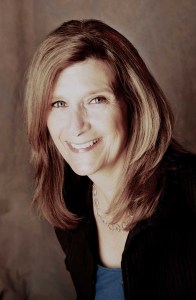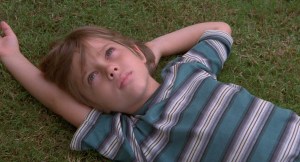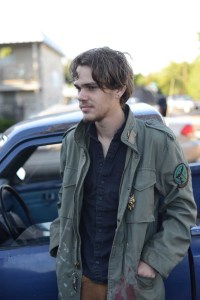
Collaborating for 22 years and 18 films, editor Sandra Adair and director Richard Linklater have developed a communications shorthand when working together. Both have laid back personalities and are open to listening to one another. Adair confirmed, “Rich is very collaborative” and their process from one film to the next is very similar.
Adair edited nine other films during the period of shooting and editing Boyhood, which was shot over the course of 12 years as the principal actors in the film actually age. The film posed a major challenge; it needed to feel like one piece despite the fragmented shooting schedule. Adair explained, “What I needed to be mindful of was a consistency in editing.”
When the project was first conceived, the story had an overall arc, but no script. The idea was to have a 12-year long “growth spurt” that took the boy Mason (Ellar Coltrane) from first grade through his entry into college. Some specific incidents would happen, especially for the parent characters, but the outline was not well documented.

The script was written each year with the input of the actors, incorporating real elements from the their lives into the lives of the characters. Current music and other contemporary events also helped pinpoint the time frame of each episode in the timeline. This method of development contributed to the naturalistic style of the film.
The production would work one month every year, scheduled between other projects. “Everything stood still, “ Adair shared. “We would go into Boyhood for a month, then go back to normal.”
Each year after a rehearsal period, there would be a 3-4 day shoot, and then Adair would edit the footage into a roughly 10-15 minute sequence. After the second or third year, she began to combine the yearly sequences to get a sense of the flow and see where the characters were in their development. She refrained from too much tightening until later in the process. Before the last year, the filmmakers took a longer time to prepare before shooting and editing.
 “It’s amazing how well you get to know these people even though each year is pretty short,” noted Adair. The editor used her own reactions to the film as a way to gage how an audience would react. “I could see myself and people I knew in the movie. That touched me and resonated with me. I trusted my gut and let those moments pool together to form the narrative.”
“It’s amazing how well you get to know these people even though each year is pretty short,” noted Adair. The editor used her own reactions to the film as a way to gage how an audience would react. “I could see myself and people I knew in the movie. That touched me and resonated with me. I trusted my gut and let those moments pool together to form the narrative.”
The transition between the first and second year was not as clearly designed as later transitions. The filmmakers worked hard to make the transitions “seamless and un-gimmicky.” They figured out the image that the outgoing year’s sequence would end upon, and then designed the incoming year’s shot purposefully. “We did not want a clear demarcation,” Adair revealed. “We wanted transitions to just wash by.”
The filmmakers took care not to overly manipulate the drama. Adair commented, “The film is as natural, as real, as possible.”





